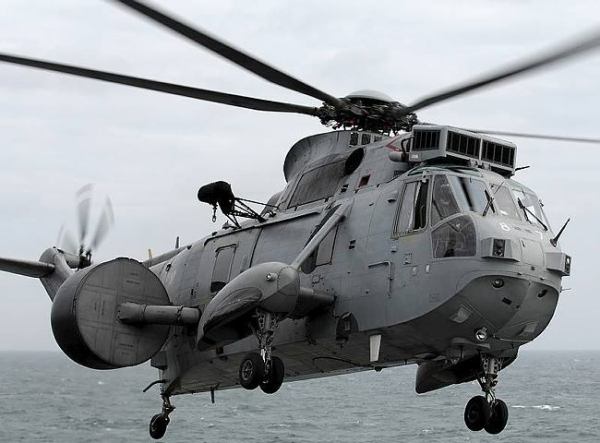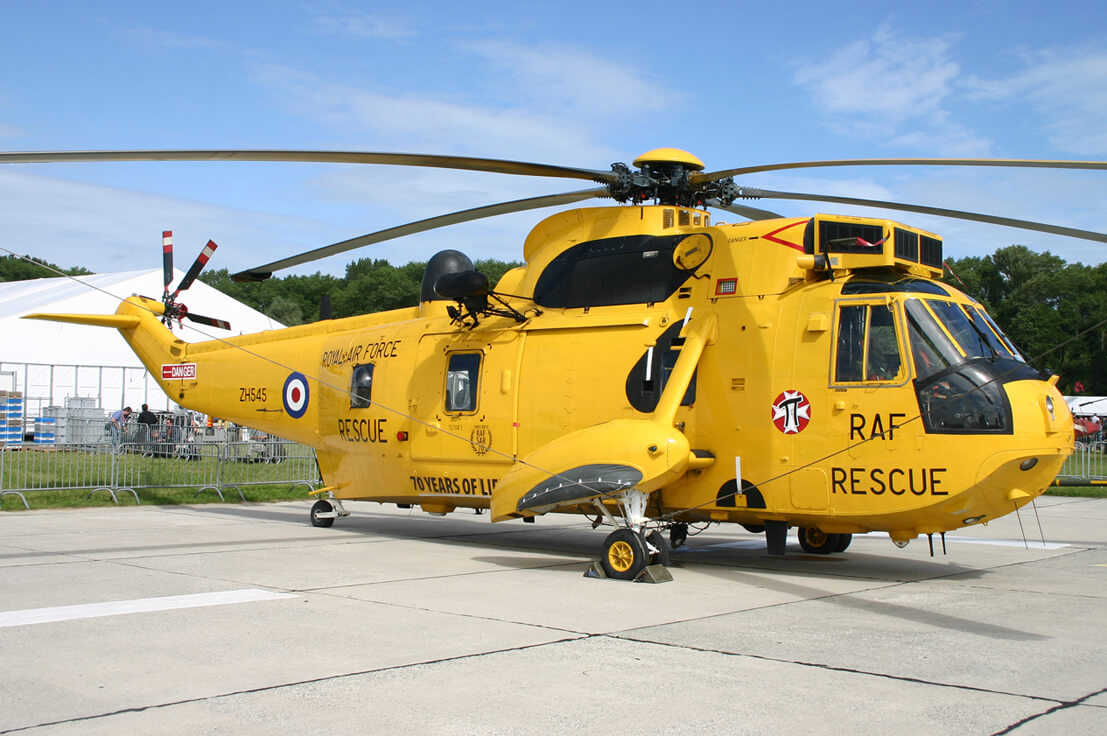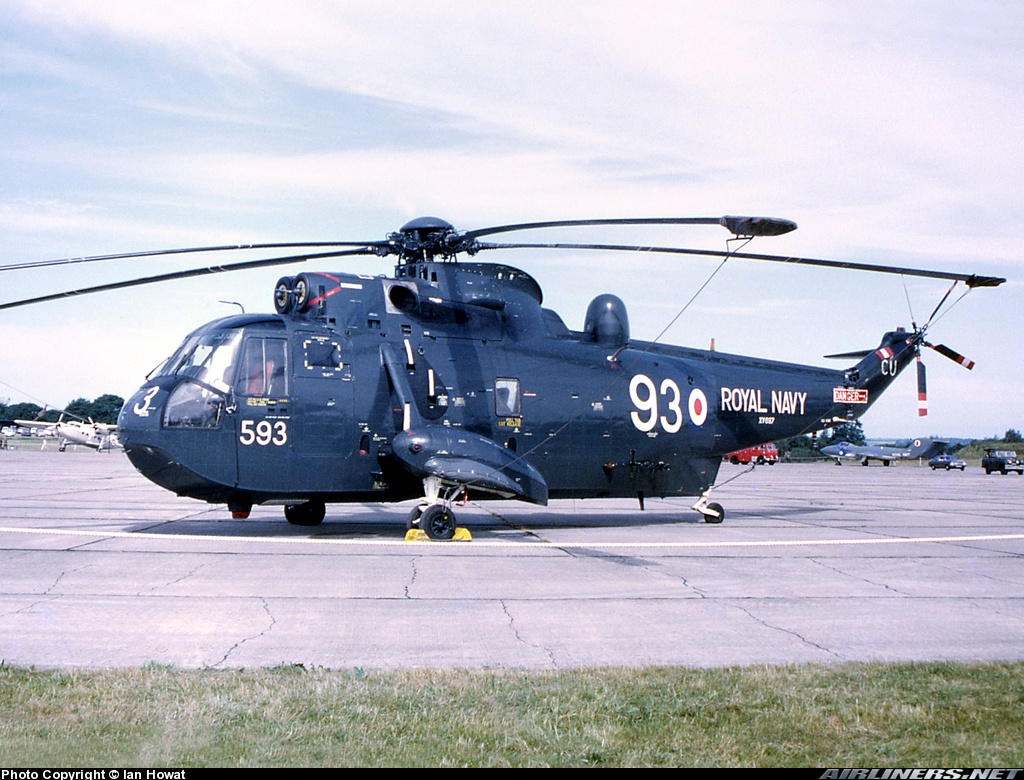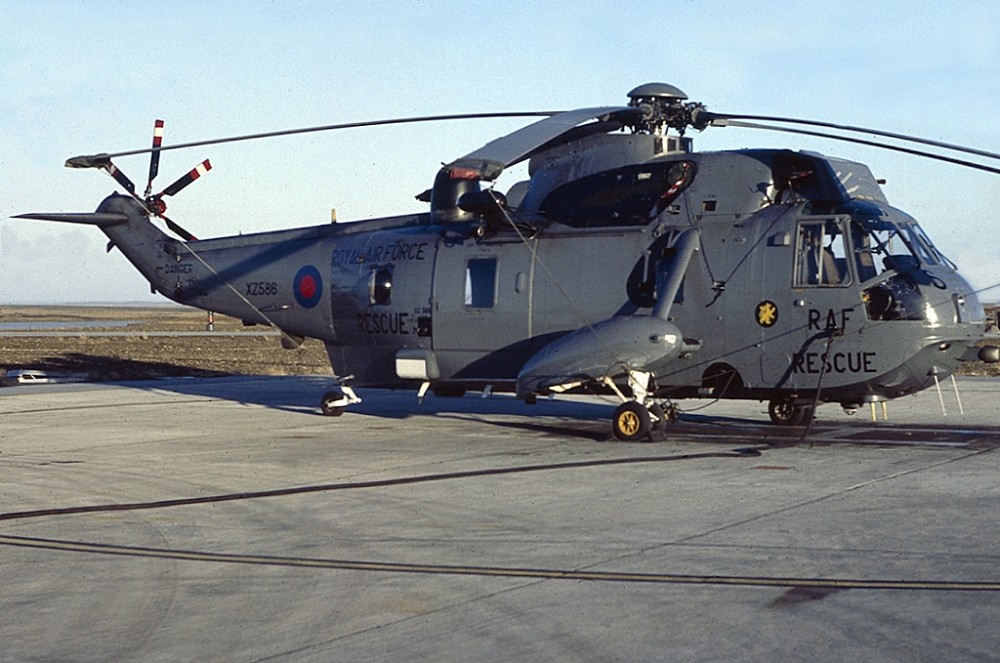
Some aircraft have proven to be game-changers. One of these is the Westland Sea King, a search and rescue (SAR) and anti-submarine helicopter that served as a mainstay in many navies around the world, including the United Kingdom’s Royal Navy.
Originally developed by Sikorsky as the SH-3 Sea King for the United States Navy, the design was later licensed to Westland Helicopters in the UK, where it was extensively developed into a robust and multipurpose platform, serving with distinction for over half a century.
Sikorsky SH-3
The origin story of the Westland Sea King begins with the Sikorsky SH-3. Unveiled by Sikorsky Aircraft in the late 1950s, the SH-3 Sea King was intended as a submarine hunter-killer for the US Navy.

It was the world’s first amphibious helicopter and was powered by two 1,400-horsepower turbine engines.
Designed with a hull allowing it to land on water, the Sea King could recover its crew even if it had to ditch in the sea.
The prototype SH-3 showing off its ability to land in the water
The Sikorsky SH-3 became operational in 1961, boasting features such as the ability to detect submarines through sonobuoys and a dipping sonar.
The aircraft was also equipped with torpedoes and depth charges, providing it with substantial anti-submarine warfare (ASW) capabilities.

Its large, spacious cabin and powerful engines also made it suitable for roles beyond ASW, including search and rescue, transport, and even serving as a presidential helicopter under the designation “Marine One.”
Westland Sea King
While the SH-3 was making its mark in the US, across the Atlantic, the British company Westland Helicopters acquired a license from Sikorsky to manufacture the Sea King.
While the Westland Sea King and the Sikorsky SH-3 may share a common lineage, their operational characteristics and capabilities differ quite significantly.

This divergence is a testament to the extensive modifications and upgrades implemented by Westland Helicopters to tailor the Sea King to the unique requirements of the British military.
One of the most substantial modifications occurred in the aircraft’s power plant.
The original General Electric T58 engines of the Sikorsky SH-3 were replaced with British-made Rolls-Royce Gnome turbines in the Westland variant.
The RR Gnome is relatively small
These engines were not only more powerful but also offered better fuel efficiency.

The increased power output and fuel economy directly translated to enhanced range and performance capabilities, offering greater operational flexibility.
Furthermore, the Westland Sea King boasted advanced British-made avionics, which drastically differed from the American counterpart.
One significant upgrade was the introduction of a fully computerized flight control system, offering an improvement in flight efficiency and safety over the systems used in the SH-3.
Westland also expanded the Sea King’s armament capacity. In contrast to the SH-3, the Westland Sea King could carry an extensive array of weaponry, including the formidable Sea Eagle anti-ship missile.

Additionally, the British version was equipped with sophisticated submarine detection systems and radar, further enhancing its operational efficacy in anti-submarine warfare.
An Indian Navy Sea King testing firing an anti-ship missile
The roles undertaken by the Westland Sea King also outstripped those of the SH-3. While the latter was primarily confined to anti-submarine warfare and search and rescue operations, the former was employed in a myriad of tasks.
These included airborne early warning and control (AEW&C), tactical troop transport, and casualty evacuation, reflecting the Westland Sea King’s versatility.
Finally, Westland also implemented minor design changes to better suit the Sea King to the British operational environment.

One such adjustment involved the modification of the landing gear to facilitate operations from smaller flight decks commonly found on British naval vessels.
The Westland Sea King is quite a different aircraft from the SH-3
Variants
This iconic helicopter with a rich history underwent numerous transformations during its decades of service.
Each variant was meticulously designed and upgraded to meet unique operational requirements, marking distinct chapters in the Sea King’s legacy.
Introduced in 1969, the HAS.1 was the first version to grace the British naval skies.
Tailored for anti-submarine warfare, it was equipped with a dedicated search radar and a dunking sonar.

There are a huge number of variants, thanks to the long service life
In 1974, the HAS.2 made its appearance, boasting upgrades to the radar and sonar systems.
Furthermore, the engines were enhanced, providing a notable uplift in performance, thereby increasing the helicopter’s operational capabilities.
The HAR.3, entering service in 1978, marked a significant transition.
This model, devoid of the anti-submarine equipment found in its predecessors, was the first version dedicated to Search and Rescue (SAR) operations.
This transformation was facilitated by an additional fuel capacity, extending the helicopter’s range, a crucial requirement for effective SAR missions.
The Sea King has been adopted by many nations, including Australia
One of the more distinct variants was the Sea King AEW.2, converted from the HAS.2s to serve as an Airborne Early Warning (AEW) platform. The retirement of the Fairey Gannet AEW aircraft necessitated this modification.
The defining feature of this variant was the large radome housing a Searchwater radar, an invaluable asset for early detection and response.
In 1980, the HAS.5 was unveiled, incorporating advanced avionics and the capability to operate the Sea Eagle anti-ship missile.

Following this, the Sea King HAS.6 was launched as an upgrade of the HAS.5, featuring an improved avionics suite and better performance.
The Sea King HAR.3A was an enhanced SAR variant carrying the advanced radar and navigation systems found in the HAS.6. Lastly, the Sea King ASaC.7, initially known as the AEW.5, emerged as an upgraded AEW version equipped with the high-performing Searchwater 2000 radar.
The huge radar can’t be hidden!
In essence, the journey of the Westland Sea King, traced through its variants, reveals a narrative of continual adaptation and enhancement.
Each version, from the HAS.1 to the ASaC.7, reflects a concerted effort to optimize this remarkable aircraft for a range of duties, from anti-submarine warfare to search and rescue, thereby solidifying its place in aviation history.
Operation History with the UK
The Sea King has a storied operational history spanning multiple decades and numerous roles, both in the UK and internationally.
Its adaptability and reliability have seen it involved in many significant military and humanitarian operations.

One of its most notable engagements was during the Falklands War in 1982.
These helicopters are no strangers to operating from aircraft carriers
Deployed by the Royal Navy, the helicopter was instrumental in anti-submarine warfare, troop transport, and casualty evacuation missions.
The helicopters served as the primary means of rapidly moving troops across the Falklands due to the islands’ rough terrain and the threat of landmines. Its ability to function in this multi-role capacity demonstrated its versatility and contributed to the British victory.
The Sea King was also a significant component of the UK’s Search and Rescue (SAR) capabilities.
Operated by both the Royal Navy and the Royal Air Force, the helicopter was involved in thousands of missions over its service life, saving many lives in the process. Its large cabin, stable flight characteristics, and ability to land on the water made it ideal for this role.

Outside of the UK, the Sea King was used by several other nations, including India, Germany, Norway, and Egypt, among others. Each employed the Sea King in roles ranging from anti-submarine warfare to SAR, highlighting its adaptability.
In the late 1990s and early 2000s, the Sea King also served in peacekeeping operations in the Balkans and supported operations in Iraq and Afghanistan, where they were used for troop transport and casualty evacuation.
After nearly 50 years of service, the Sea King was officially retired from the Royal Navy in 2016, marking the end of an era.
However, its legacy lives on.
The Royal Navy even operated the type in Afghanistan
When the Royal Navy and Royal Air Force retired their Sea King SAR fleets, some of these helicopters were acquired by civilian operators.

The civilian models, known as the HAR3, were used for a wide range of missions, from emergency medical services to firefighting.
One of the main civilian operators of the Sea King in the UK was Bristow Helicopters, which operated the aircraft for the UK Coastguard.
In this role, the Sea King carried out coastal and maritime SAR missions, saving countless lives over the years.
The aircraft’s large cabin, stable flight characteristics, and amphibious capability made it ideal for these tasks.
Additionally, several were converted into flying crane helicopters, known as “Sky Cranes,” used for heavy lifting in civilian construction projects.
In this role, the helicopters could transport heavy equipment to locations that were difficult to access by land.
A search and rescue Sea King. This aircraft is lovingly known as ‘Damian’ and has completed over 50 years of service. Photo credit – Airwolfhound CC BY-SA 2.0
Internationally, the Sea King is also used by civilian operators in roles ranging from firefighting to offshore oil rig support.
For instance, the Canadian company, Coulson Aviation, converted several for aerial firefighting operations.
In retirement, a number of Sea Kings have been preserved in museums and continue to serve in an educational capacity, allowing visitors to appreciate the importance and versatility of this aircraft.

Conclusion
The Westland Sea King is much more than a helicopter.
It’s a symbol of the resilience and adaptability of British engineering, embodying a spirit of service and duty. From its origins as the Sikorsky SH-3 to its transformation into a workhorse of the Royal Navy, the Sea King exemplifies the evolution of military technology.
Even in retirement, the Sea King’s legacy lives on, not just in the machines that have replaced it, but in the hearts and minds of those who flew, maintained, and were rescued by this remarkable aircraft.
The echoes of its rotor blades will forever reverberate through aviation history.
Specifications
Crew: 2-4
Length: 55 ft 10 in (17.02 m)
Height: 16 ft 10 in (5.13 m)
Empty weight: 14,051 lb (6,373 kg)
Gross weight: 21,000 lb (9,525 kg)
Max takeoff weight: 21,400 lb (9,707 kg)
Powerplant: 2 × Rolls-Royce H.1400-2 Gnome turboshaft engines, 1,660 shp (1,240 kW) each
Main rotor diameter: 62 ft 0 in (18.90 m)
Cruise speed: 112 kn (129 mph, 207 km/h) (max cruise at sea level)
Range: 664 nmi (764 mi, 1,230 km)
Rate of climb: 2,020 ft/min (10.3 m/s)





